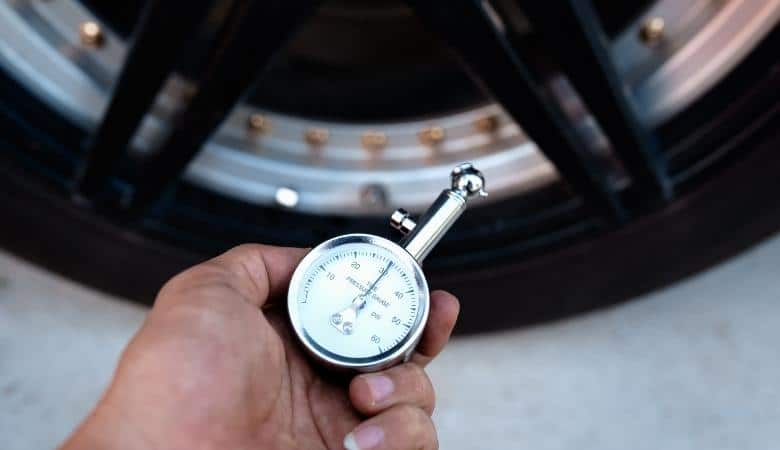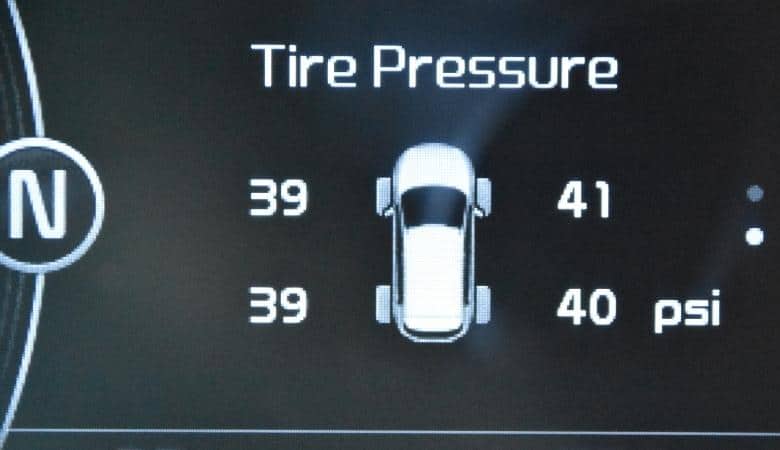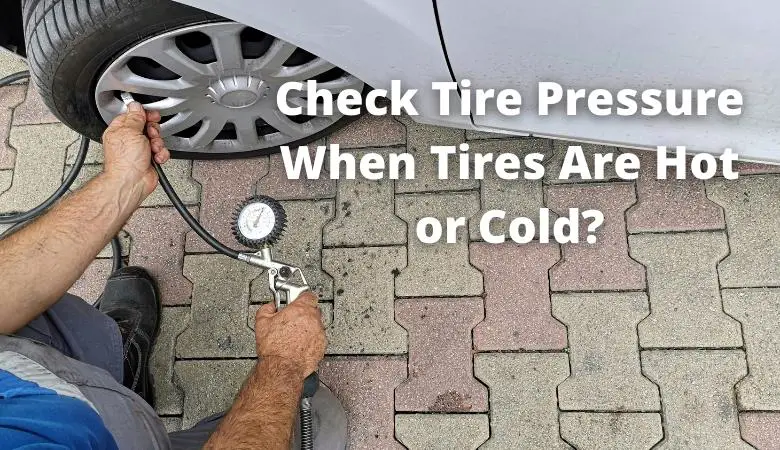Most of us know that having correct tire pressures play a significant role in our driving experience. Both over-inflated and under-inflated tires will affect the cars handling and braking negatively as well as reduce the longevity of the tires.
So, make sure your have the recommended PSI’s in your tires when driving!
Now, one common question people have regarding tire pressure, is whether they should check and refill when the tires are hot or cold.
It’s recommended to both check and refill your tires when they are cold. The reason for this is that car and tire manufacturer recommendations, often found on the door jamb and in the car manual, are set based on cold tires.
Although checking tire pressures when they are cold is recommended, some situations may call for a different approach. If you are on the road and you realize a tire is losing its pressure, you have to do the necessary and correct it. But, it’s likely you don’t have the time to wait for the tires to cool down.
How do you handle this problem? Well, keep reading to learn more about the effects of temperature on air pressure and what you should do.
Impact of Temperature on Tire Pressure
Scientifically, molecules move slowly during low temperatures and bundle closer to each other. When the temperatures are raised, the air molecules move rapidly away from each other. Tires gain or lose around 1-2 PSI for every 10° Fahrenheit change. Your tires could potentially lose about 4 PSI if the temperatures drop by 20° Fahrenheit.
Checking Tire Pressure When They Are Cold
The recommended tire pressures on the placard on your door jamb are tested for cold tires. You are always advised to check the tire pressure first thing in the morning when it is still cold.
When the wheels are cold, the air molecules are closely packed together, meaning you will get accurate PSI readings.
If you refill your tires at warmer temperatures around 100° F and they drop to 80° F the following day, your tire will have lost around 4+ PSI when checking the temperatures.
You can never tell whether your car is under-inflated by looking at it because it still looks the same. You need a pressure gauge for accurate readings.
Why You Shouldn’t Check Tire Pressure When The Tires Are Hot

Higher external temperatures can naturally raise the tire pressure considering the relationship between temperature and pressure. Once you understand this, you will know why auto and tire manufacturers advise checking tire pressure before driving.
As you are driving, the tires tend to heat up due to the friction from the road. When the air molecules in the wheels are heated, they expand and move away from each other. This increases compression, which further boosts the internal tire pressure. If you read the tire pressure at these times, you will record a wrong PSI due to the expansion.
The pressure recommendations for the vehicle are arrived at after testing in cold environments. Even if you live in hot regions, guidelines are provided for checking temperatures. A 10° change would inflate the pressure by around 1 PSI.
When Should You Inflate Your Tires?
Always try to inflate your tires when they are still cold. Driving for at least 15 minutes is enough to heat your tires and increase the air volume.
Most people do not have the luxury of filling their tires at home, so they drive to a gas station, which heats up their tires a bit. To correctly fill your tires if you don’t have time to let them cool down at the gas station, check the pressure for each tire at home when they are still cold and note down the PSI. Once at the gas station, re-record the air pressure and add the PSI you initially needed on the first test.
If you can’t do this and need to refill your tires when they are hot, set the pressure 2-4 PSI above the vehicle’s recommended cold inflation when refilling your tires.
Another common question people have is whether they should deflate their tires when it’s cold outside and inflate when it’s hot outside. We answered that in this post.
How to Check The Tire Pressure
A slight change in tire pressure is hard to notice with a naked eye, but it can mean a great deal for your driving. Tires tend to lose pressure when left in the cold for too long.
To be on the safe side, you should check your tire pressure each time you drive by the pump or when your TPMS lights indicate on your dashboard.
1. Park the car on a flat surface
If you have been driving, park the car on a flat surface, under a shade to cool down for two hours. A flat surface ensures that no obstacles or bumps are flattening your wheels. You can then identify where the tire looks flat when pressing against the road.
To add air pressure to your tires, you should have an air pump, whether at home or at a gas station.
2. Check the recommended tire pressure
Your car has specific PSI recommendations for all the tires when cold. A tire can only be called cold when your vehicle has been parked for more than three hours or driven less than a mile at moderate speed.
Check the driver’s door frame for the placard with tire pressure specifications. If it’s not there, check the owner’s manual for more details on the front and rear tire pressures.
3. Check the tire pressures
If you need different pressure levels for your front and rear tires, note down the correct PSI for each to avoid confusion.
When using a tire gauge, remove the valve cap from the tires, then place the gauge over the valve system. Apply pressure when pressing down until you hear a hissing sound that disappears when your gauge reads.
An analog gauge will push the bar from the bottom to the level of pressure in the tire. A bar shows the measurements units, which is pretty accurate. The readings are displayed on a small screen if you are using a digital gauge.
Note down these readings before moving to the next steps.
4. Fill the tire to the recommended PSI
Refill any flattened tires using an air compressor. Air compressors are different, so you must carefully read the instructions to ensure you are using them correctly. Refill all the tires by inserting the hose tip over the valve, then press the lever.
By the time you get to the gas station, your tires will be hot, so you have to inflate the tire pressure by 2-4 PSI above the recommended value, if you decide not to wait for them to cool down. Later on, when the tires cool down, make sure you recheck the pressure to be sure.
After all the tires are filled to the required amount, use your tire pressure to check again. Over-inflated tires should be of no concern because you can always let some air out. You should never leave the gas station with over-inflated tires.
How Often Should You Check Your Tire Pressure?
During cold weather, tires fluctuate often, meaning that you should check the tires once every month. Thankfully, modern cars have Tire Pressure Monitoring Systems (TPMS), making the job easier. The warning light will indicate when any of the four tires show a PSI below the manufacturer’s recommendations.

Checking temperatures is trickier in warm weather because air pressure expands more in the tires. However, its impact is not as significant as expected for cold weather. Tires lose about one PSI a month after refilling them, hence the need for regular checking.
Doing this will help you keep your tires inflated to the required pressure at all times. During summer, the TPMS does not indicate temperature changes, so you need to do it yourself.
Keeping your tires inflated properly will improve the lifespan of your tires and the quality of your ride. Fluctuating temperatures could mislead you to think that you are running on enough PSI only to lose control of your steering and deal with worn-out tires.
You can learn more about how often you should fill your car tires in this post.
Hi, my name is Niklas, the head content creator & CEO of Whirling Wheelz. I am very interested in vehicles of all kinds, mainly cars. I have a car mechanics degree from high school and a big hobby of mine is to follow the WRC (World Rally Championship) both online and through travel.


